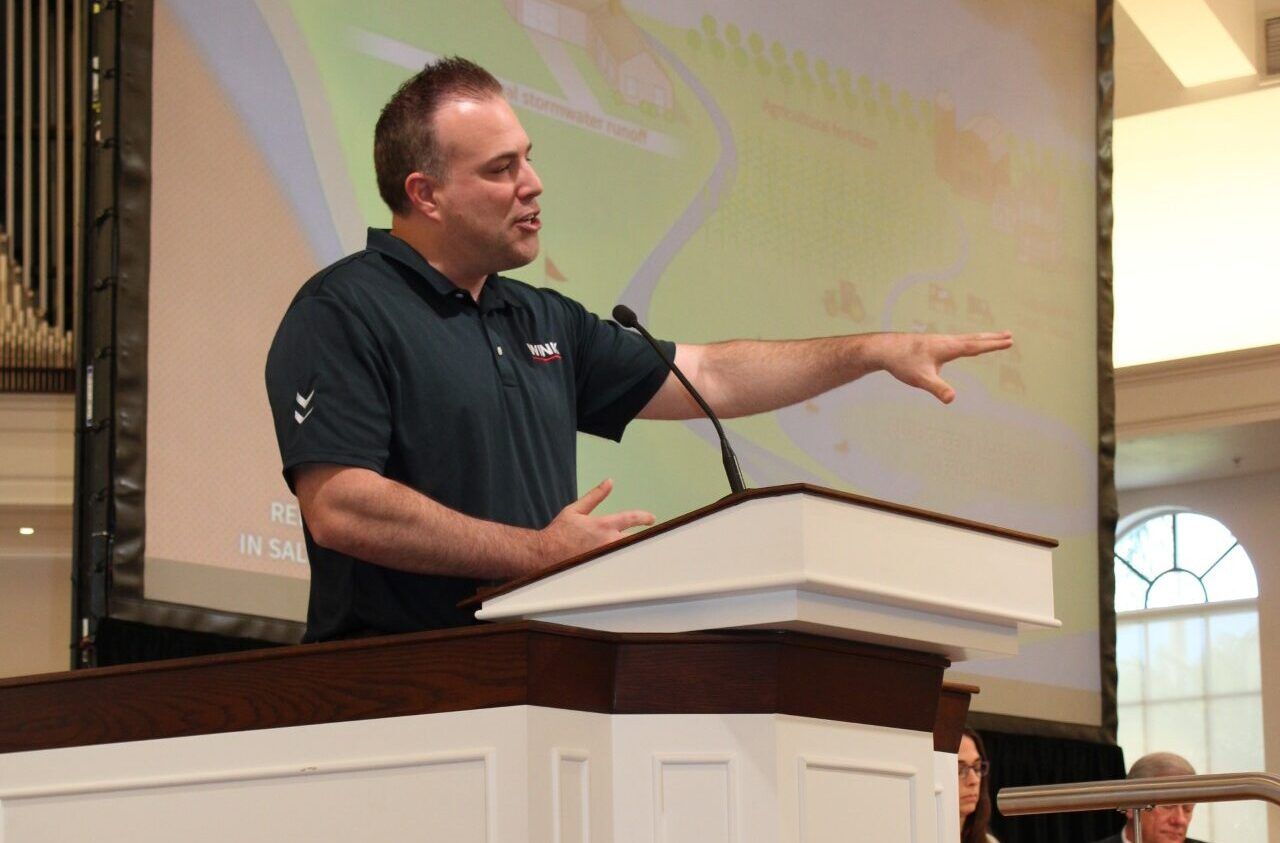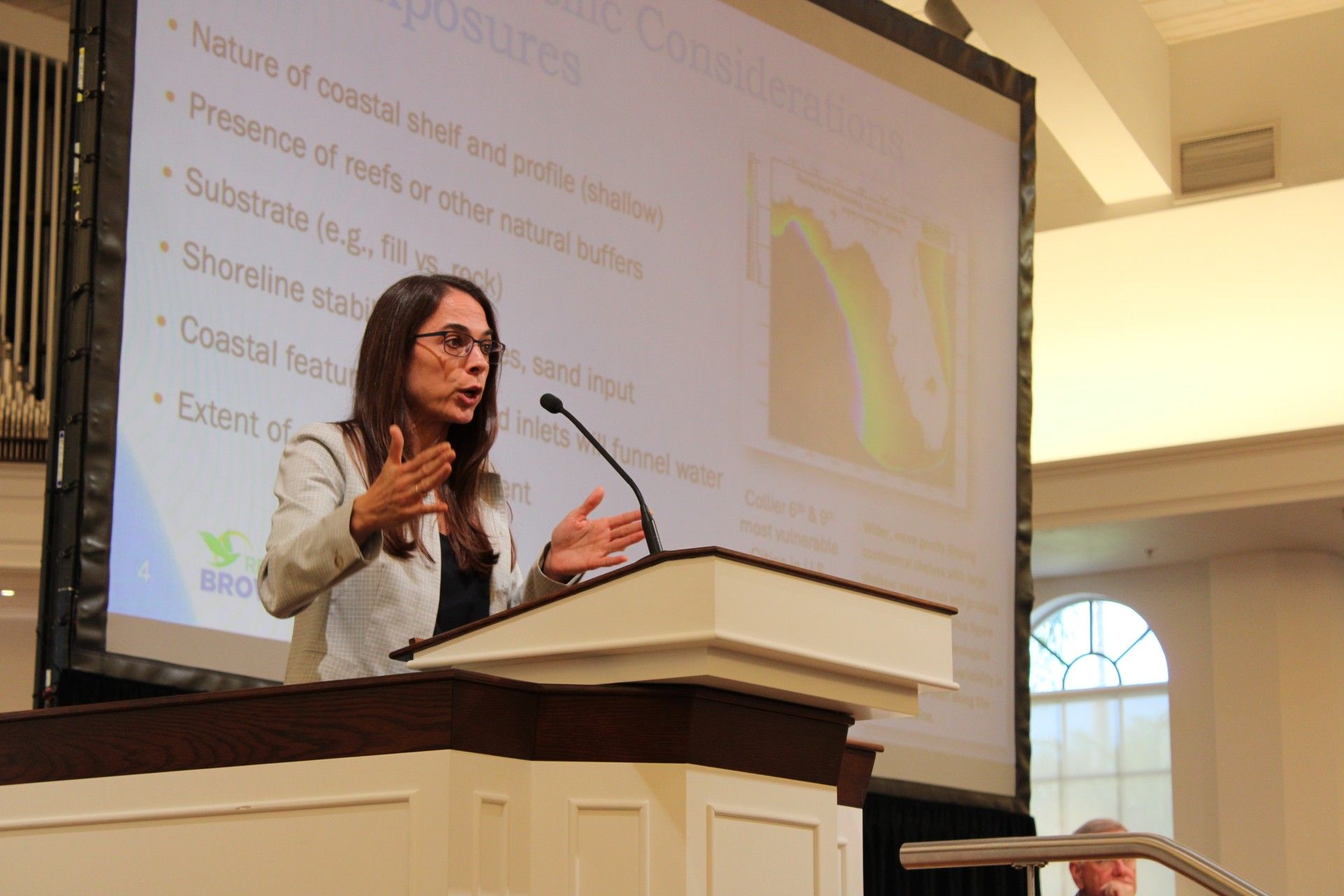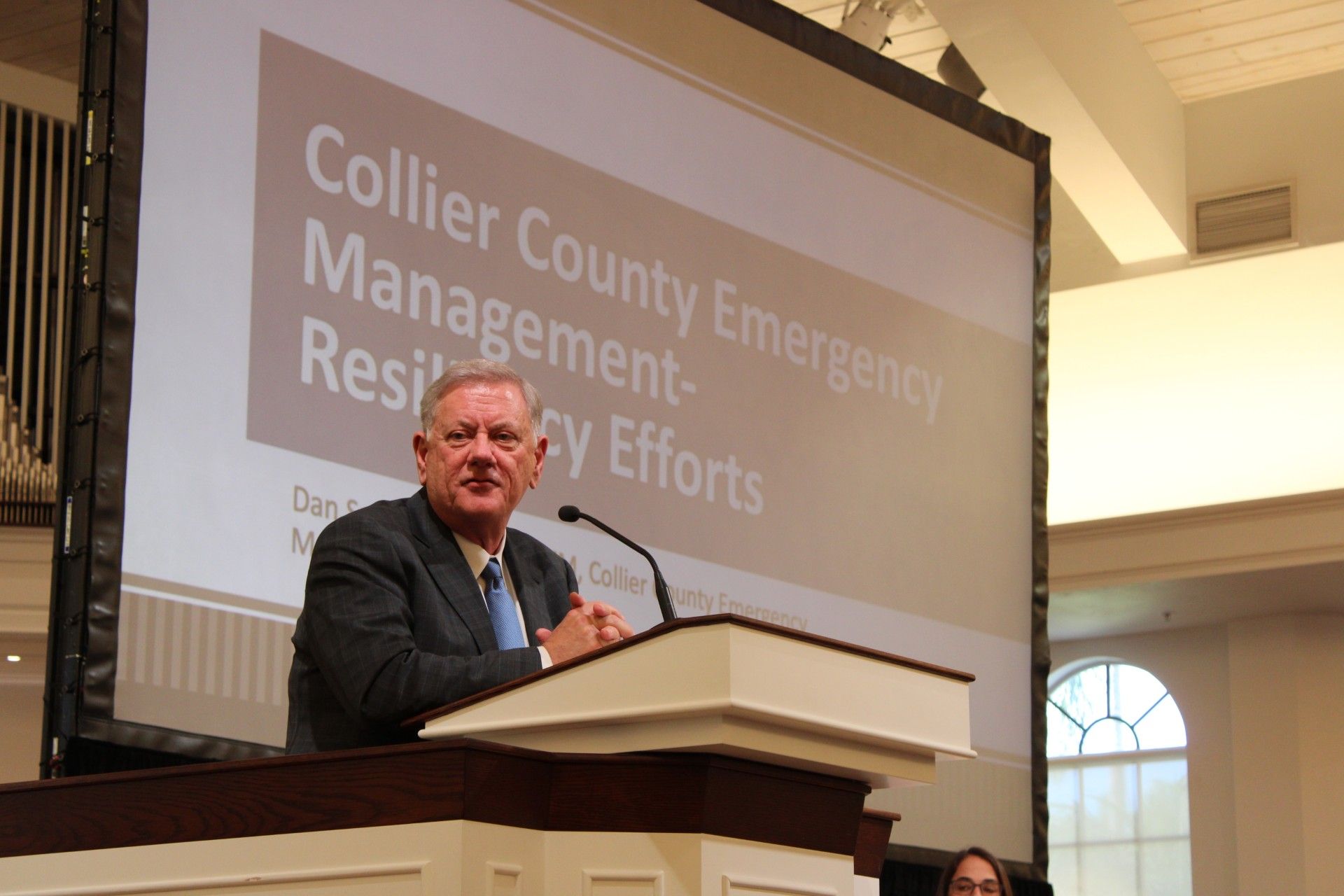Eileen Joyce, Realtor
Email: eileen.joyce.realestate@gmail.com
Tel: 516-567-7616
This is paragraph text. Click it or hit the Manage Text button to change the font, color, size, format, and more. To set up site-wide paragraph and title styles, go to Site Theme.
With hurricane season approaching, an audience of almost 400 gathered at Naples United Church of Christ on March 18 for a forum on how Naples and other Collier County communities can better prepare for — and recover from — major storms.
Taking the Punch out of Powerful Hurricanes: A Forum on Building Resilience featured Matt Devitt, WINK News chief meteorologist; Jennifer Jurado, Broward County chief resilience officer; and Dan Summers, Collier County Emergency Management Division director.
Panelists also discussed concerns about planned or possible federal funding cuts to agencies, including the National Oceanic and Atmospheric Administration, National Weather Service and the Federal Emergency Management Agency.
Devitt offered a history of storms that have had major impacts on Naples and Southwest Florida and said now is the time to prepare for whatever the upcoming hurricane season may bring.
The 2024 Atlantic hurricane season saw a total of 18 storms, 11 hurricanes — with five designated as major — and was the second costliest Atlantic season on record with preliminary estimates at $192 billion.
 “I am so encouraged to see everybody here right now because you guys are doing the right thing,” Devitt told the crowd. “The time to prepare for a storm is not as it’s approaching; the time to do it is on sunny, beautiful days ahead of tropical systems.”
“I am so encouraged to see everybody here right now because you guys are doing the right thing,” Devitt told the crowd. “The time to prepare for a storm is not as it’s approaching; the time to do it is on sunny, beautiful days ahead of tropical systems.”
He spoke about the science behind how tropical systems develop, including warm waters, low wind shear, high humidity and rising air, and explained the difference between El Nino and La Nina patterns, with the latter being more favorable to a higher number of stronger storms.
While Devitt said it is still too early to predict what the season ahead will look like with any certainty, he said the current outlook “is right now a battle between neutral conditions and La Nina. I think right now the probability for an El Nino is 10%. The other 90% is split between either a neutral phase, where it’s not either of them, or it’s La Nina.”
 In her role as chief resilience officer for Broward County, Jurado said she has seen the value of public-private collaboration in generating a resilience strategy for before and after major storms.
In her role as chief resilience officer for Broward County, Jurado said she has seen the value of public-private collaboration in generating a resilience strategy for before and after major storms.
She explained how the business community in Broward County supported a $30 billion investment in the proposed resilience plan.
“The business community worked with us on that plan,” she said. “They endorsed it up front and participated throughout. We have economic resilience work groups at the regional and Broward County levels, and they support us in our annual summits, so they are very present and involved in the dialogue.”
Jurado also presented examples from other international and U.S. approaches to creating resilience, including the Thames barrier upgrade in London, seawall enhancements in San Francisco, the Hampton Roads, Virginia, green infrastructure plan and coastal restoration and stabilization projects in Fort Lauderdale.
She noted the vulnerability of the Gulf Coast to storm surge, according to the U.S. Geological Survey, due to wider, more gently sloping continental shelves with large shallow water areas that will produce larger storm surges.
Jurado cited other factors that can create exposures for communities, including building on wetlands, depriving shorelines of sediments and the basic geology underlying the area.
“All of those things will come into play,” she said. “You will have questions about the overall integrity of [building] foundations. We have lots of exploration of how much will some of the evolving climate conditions be compounded by the way that we built and where we built, and then the density and the cost of the infrastructure of the region in which we live.”
 As director of Collier County Emergency Management since 2003, Summers cited some of the factors that increase the region’s disaster risk and vulnerability, including a growing and aging population, aging infrastructure or lack of infrastructure hardening, more intense storms and concurrent disasters that severely limit government and private resources.
As director of Collier County Emergency Management since 2003, Summers cited some of the factors that increase the region’s disaster risk and vulnerability, including a growing and aging population, aging infrastructure or lack of infrastructure hardening, more intense storms and concurrent disasters that severely limit government and private resources.
He noted that a new Carnegie Foundation study showed Florida has spent $27 billion in disaster costs from 2023 to 2025, putting it in the top five with Puerto Rico, Louisiana, New York and Texas.
“We’ve got to do better,” he said. “We cannot continue this path of the damage-repair, damage-repair cycle that we deal with.”
In addition to trying to help break that cycle, Summers said the main resiliency responsibilities of the county’s emergency managers are preventing the loss of life, finding ways to protect infrastructure and environment, finding opportunities to expedite the return to predisaster conditions and sustaining or improving quality of life and placing and finding efficiencies in disaster recovery and reducing waste and duplication of efforts.
Summers reminded the audience that all disasters are “federally funded, state supported and locally executed — and you’re part of that local execution.”
In response to questions submitted from the audience following the presentations, panelists also discussed concerns about planned or possible funding cuts to federal agencies.
Regarding cuts to NOAA, Devitt said they affect programs including weather balloons whose data is used in meteorologists’ forecasts.
“If you have less weather balloons, hypothetically, you could have a less accurate forecast to a certain degree,” he said. He also noted a conversation he recently had with someone at the National Weather Service, who said they were “overworked, understaffed, they need help, and this is not what they needed.”
Summers added that his division is paying very close attention to what is going on with federal cuts.
“We learned today that our wildfire meteorology, which is a secondary subspecialty that gives us forecasting for our first responders during wildfire interface, has been dramatically cut,” Summers said. “So, we don’t know what our wildfire weather resources are going to be.”
As for FEMA, Jurado called the agency a critical partner.
“First, you need local money to be able to leverage, but what are you leveraging against if those funds are not available? You’re just doing less: I mean, you can’t fabricate the money,” she said. “And it’s critical, again, because of the cost escalation. We can’t afford four or five years waiting for the funding environment to improve.”
Summers said his division has major concerns about possible cuts and changes to FEMA. He said the agency has been prone to take the blame “when state or local government is not as prepared as they should be.”
“My engagement with FEMA has always been first class; it’s been professional,” he said. “Congress has written the law as to what they allow and don’t allow to be reimbursed and how that’s done, so that’s No. 1. No. 2, any time you bring in 3,000 to 5,000 additional temporary employees in a disaster zone, sometimes things don’t go well, as was the case in North Carolina [after Hurricane Helene], but it doesn’t mean the entire organization is at fault. So, is there opportunity for improvement? Absolutely. There’s always room for improvement.”
He said the new Carnegie Foundation study showed that 80% of FEMA’s field reserve staff or long-term recovery staff have been cut.
“We need those individuals to help us put these programs together, whether it’s philanthropic or land use or temporary housing,” he said. “I don’t like being the county’s emergency manager going blind into hurricane season, not knowing what my federal partner can and cannot provide.”
The post Hurricane resiliency forum examines impacts, challenges ahead of 2025 storm season appeared first on Gulfshore Business.